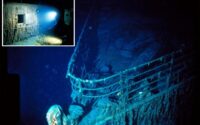Annual Draconid Meteor Shower to streak across skies through Oct. 10
The Draconid meteor shower has returned for its annual show in the skies — and while this year’s spectacle may be fainter than in past years, experts think 2025’s light show could be stronger than ever.
From Oct. 6 to Oct. 10, lucky Americans living in areas with limited air pollution will be able to catch the Draconids, featuring the dragon constellation Draco in one of the most well-known showers.
The meteors during the showers are few and far between, with about 10 visible every hour during its peak on the evenings of Oct. 7 and Oct. 8.

The Draconids are one of the weaker showers visible, clocking in at only 21 kilometers per second. Sometimes, though, the fickle dragon picks up speed and has been recorded over 1,000 meteors per hour. While that isn’t anticipated to be the case this year, the dragon could wake in 2025.
This is dependent on ideal conditions: clear skies, low light pollution, and the required aptitude for late nights.
“The Draconids are what I call an all-or-nothing shower,” Bill Cooke, the lead of NASA’s Meteoroid Environment Office, told Smithsonian magazine.
“If there’s an outburst, it may be worth going out to see. But normal Draconid activity, they’re very faint, because they move so slowly. So, a normal Draconid year, you might see two to three meteors per hour, and that’s pretty much nothing.”
This intensity is all dependent on other planets’ gravitational pull, primarily Jupiter, Cooke said. The pull can impact the comet’s trajectory, dragging it either closer or further away from Earth.

Draco, the constellation that the meteors will all fall from and around, is luckily relatively easy to spot due to its proximity to the Big Dipper and Little Dipper, which are two of the easiest constellations for the average space-lover to find.
The Draconids were first discovered in the winter of 1900 at the Nice University in France by French astronomer Michel Giacobini. It was later recovered by Ernst Zinner in 1913.
The source, Comet 21P/Giacobini-Zinner, is named after both discoverers. Its streak leaves a trail of rock and ice, with these grains burning up once it passes through Earth to create the Draconid meteor shower.
Despite most meteor showers not being visible from the grounds of the Big Apple, a meteor that crashed in New Jersey in July had been visible streaking across the sky just over the Statue of Liberty.


